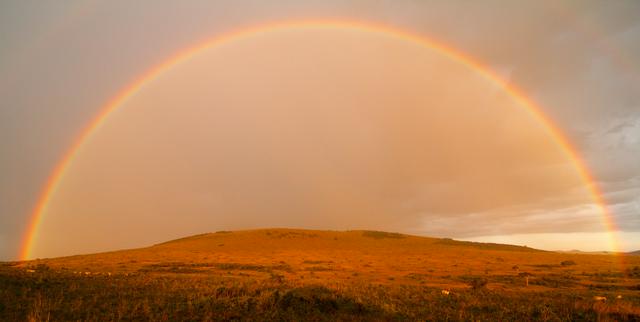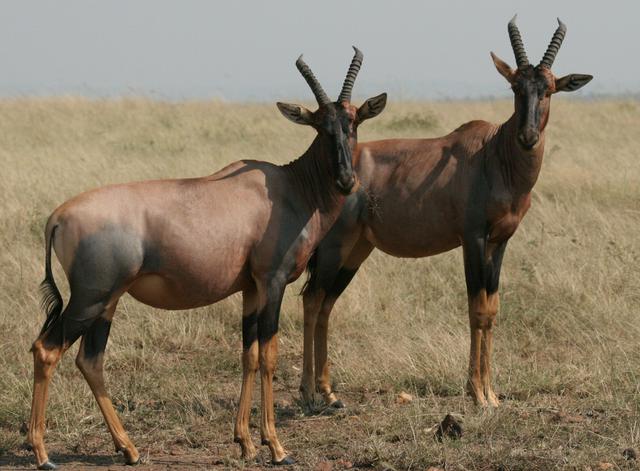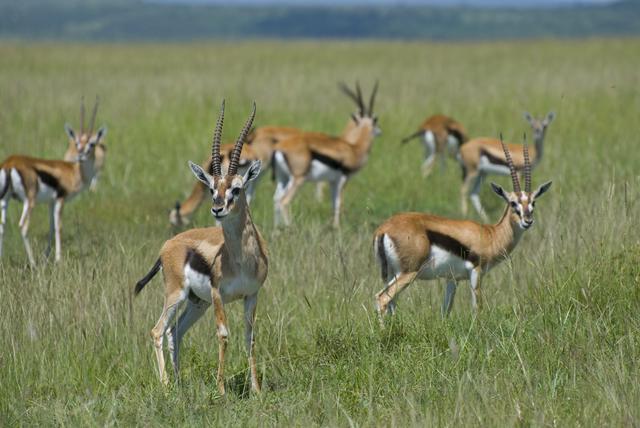 Maasai Mara National Reserve is in the southwest of Kenya. The Maasai Mara is not a National Park, but rather a National Reserve belonging to the Maasai people and administered by the local county councils. It is one of the best known and most popular reserves in Africa.
Maasai Mara National Reserve is in the southwest of Kenya. The Maasai Mara is not a National Park, but rather a National Reserve belonging to the Maasai people and administered by the local county councils. It is one of the best known and most popular reserves in Africa.
The Maasai Mara National Reserve (also Masai Mara) is each year visited by thousands of tourists, who come here to watch the many different wildlife and birdlife species in the reserve. The reserve is especially famous for the high amount of predators, such as lions, cheetahs, and leopards, and the 1½ million wildebeest which migrate through the Mara and cross the crocodile infested Mara river.
The best kept secret of the Mara is the Mara Triangle, the northwestern part of the Maasai Mara which is managed by the Mara Conservancy on behalf of Trans-Mara County Council - the rest of the reserve falls under Narok County Council. Although one third of the Mara, the Mara Triangle has only one lodge within its boundaries (compared to the numerous camps and lodges on the Narok side) and has well maintained, all weather roads. The rangers patrol regularly which means that there is almost no poaching and therefore excellent game viewing. There is also strict control over vehicle numbers around animal sightings which means a better, more authentic, experience when out on a game drive.
The Mara is the most lively during the big animal migration. The migration does not start exactly at the same time each year. It is usually from the end of August to September. Although animals can be seen at any time of the year in May/June it's difficult due to the rainy season with muddy paths.
Its advisable not to book tours that are overloaded with destinations. This is often the case with the one-week safaris offered by the major international tour operators. With too many parks in a week, you have little time in each park to observe the animals because you lose a lot of time in transit.
Check “hot offers” particularly intensely because their program might be completely firm and the accommodations often outside the parks. A good location of the lodge is very important in the Mara. They often use mini buses instead of Jeeps packed with 6 persons, which is the maximum number of seats in a mini bus. You can imagine how packed you are if everyone has a small bag plus photo equipment.
Arrowheads and pottery discarded by Neolithic man 2,000 years ago have been found in the Maasai Mara National Reserve. Since the 17th century the Masai people have occupied the area - of course together with the wildlife, who are the true landlords here. The Maasai Mara National Reserve as it appears today was established in 1961, and covers 1,510 km² (583 sq miles).
 The Maasai Mara is characterized by four different kinds of topography: sandy soil and small bushes to the east, the Siria Escarpment forming a spectacular plateau as the western boundary of the reserve, lush grasslands and woodlands around the Mara River and open plains with scattered bushes making up the largest part of the reserve. The landscape is very varied and has a romantic feeling to it, as can be witnessed in the film Out of Africa, which was filmed here in 1985.
The Maasai Mara is characterized by four different kinds of topography: sandy soil and small bushes to the east, the Siria Escarpment forming a spectacular plateau as the western boundary of the reserve, lush grasslands and woodlands around the Mara River and open plains with scattered bushes making up the largest part of the reserve. The landscape is very varied and has a romantic feeling to it, as can be witnessed in the film Out of Africa, which was filmed here in 1985.
When visiting the Maasai Mara you are likely to see the famous Big Five: lion, leopard, elephant, rhino and buffalo. Especially lions are common here, and have grown relatively accustomed to their two-legged visitors, which makes them easier to spot. The Mara Plains are teeming with wildebeest, zebra, giraffe, impala and Thomson's gazelle. Also cheetahs, hyenas and jackals are seen regularly in the reserve. In the Mara River large amounts of hippos and crocodiles are enjoying their lives - the crocodiles are especially happy in July and November when thousands of wildebeest migrate across the river causing a sumptuous feast for the hungry crocodiles.
Birdlife in Maasai Mara are abundant and diverse. Species such as eagles, ostriches, storks and vultures are among the more than 50 different birds of prey.
Maasai Mara is 1,500-2,200 m (4,900-7,100 ft) above sea level, which makes the climate slightly damper and milder than in other similar regions. Highest temperatures in daytime is 30°C/85°F (warmest in December and January, coldest in June and July), at night the temperature rarely drops below 15°C/60°F.
The rainy season is April-May and November. In these periods some parts of the Mara will get very muddy and practically inaccessible. The dry season occurs from July to October. This is the best time to visit the Maasai Mara as a lot of herbivores indulge in the plants grown long and lush after the rains - and, in these months you will stay clear of heavy showers.
- Entry fee is USD 80 per person per night.
- You can book your tour of the National Reserve with a reliable tour operator that will usually bundle the park fee, the accommodation, and the safari car and driver fees to make sure that you can enjoy your adventure and not have to worry about the details.
The main attraction of this game reserve is, not surprisingly, game viewing. Go on morning, afternoon and night drives over several days in order to see as many as possible of the resident animals, such as lion, leopard, elephant, zebra, giraffe, Thomson's gazelle, hyena, rhino, hippo and the thousands of migrating wildebeest that makes this park so famous.
Many camp sites and lodges offer game drives with experienced drivers and skilled, well-informed guides. These are well worth your money, as they will provide you with priceless knowledge and help you spot animals you wouldn't see on your own. And please catch as many sunuppers and -downers as you can.
Maasai Mara's most famous sight is the Great Migration, a great animal migration event that takes place in July and August every year.
There is a Maasai village near Oloolaimutiek gate of this game park. It is a good experience and will help you to deepen your understanding of the Maasai's culture and simple way of life.

- Game viewing. Go game viewing till you drop! You can bring your own car (with or without private driver), take a tour, or some of the lodges provide game drives.
- Hot Air Safaris. If this gets a little monotonous (which it probably won't), you can go on a much recommended hot air balloon safari early in the morning and see the sun rising above the wildlife and the magnificent landscapes. And do remember to take lots of photographs! Price is about 450€ (Ksh 45000 ) per person! The flights are mostly booked out by Chinese, so book ahead at times.
- Wellness. Some lodges and camps offer massage and wellness treatments making you able to combine wildlife watching with luxury.
- Maasai Village Visit. Your guide should be able to arrange a visit to the local Maasai Village. These are actual living villages rather than historical relics. You will probably have a charge around US$20 from the village, plus whatever conveyance cost you incur. Once in the village, expect to get the opportunity to buy many more handicrafts, etc, from their markets.
Game viewing. Go game viewing till you drop! You can bring your own car (with or without private driver), take a tour, or some of the lodges provide game drives.
Hot Air Safaris. If this gets a little monotonous (which it probably won't), you can go on a much recommended hot air balloon safari early in the morning and see the sun rising above the wildlife and the magnificent landscapes. And do remember to take lots of photographs! Price is about 450€ (Ksh 45000 ) per person! The flights are mostly booked out by Chinese, so book ahead at times.
Wellness. Some lodges and camps offer massage and wellness treatments making you able to combine wildlife watching with luxury.
Maasai Village Visit. Your guide should be able to arrange a visit to the local Maasai Village. These are actual living villages rather than historical relics. You will probably have a charge around US$20 from the village, plus whatever conveyance cost you incur. Once in the village, expect to get the opportunity to buy many more handicrafts, etc, from their markets.
You can buy strings of beads or beads already made up into necklaces and other pieces of jewellery at the gate and outside the entry to the park.
If you want to support local communities do not buy trinkets from the camps and lodges and instead buy them from a local village - 'manyatta'.
If you're heading next for Lake Naivasha or Nakuru you can get off in Mai Mahiu at the junction of the Old Naivasha Road, so you can skip the Nairobi traffic jams. From there frequent matatus head north.
